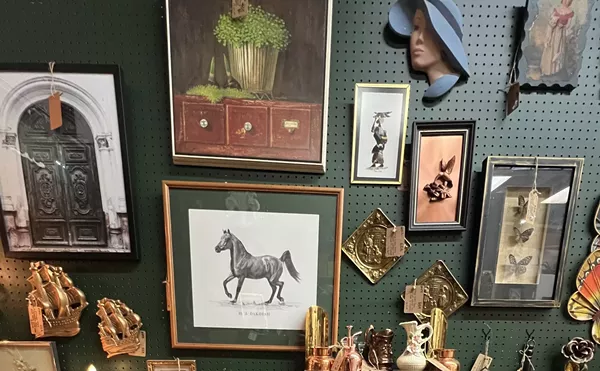Servant tells the story of Truffaldino, servant to Beatrice, who is traveling dressed as her own brother after the latter's death at the hands of her lover, Florindo. Beatrice has come to Venice to persuade the father of her brother's betrothed, Clarice, to give her Clarice's dowry, which she will use to reunite with Florindo. When Florindo turns up in Venice, unaware that Beatrice is there or that she's in disguise, Truffaldino offers to become his servant, too, reasoning that two masters will mean double pay for him and twice as much food. Naturally, all kinds of confusion follows, with letters, money and challenges flying, usually delivered to the wrong recipient.
One of the reasons Servant is kept alive year after year is that it's a kind of crossroads play. Carlo Goldoni created the scenario in 1745 for a famed commedia dell' arte troupe, and the characters were the stock types such troupes usually portrayed. But Goldoni was apparently appalled by the actors' excesses, and he decided to write the script down. Some critics feel that his characters are a touch more developed than those of classic commedia, and that they spot just a hint of seriousness, even tragedy, beneath all the foolery; after all, the story begins with a discussion of the death of Beatrice's brother, and the two primary couples seem to be somewhat devotedly in love. Truffaldino's hunger — though a standard attribute of commedia servants — is intense enough to arouse some empathy.
But the play is primarily pure silliness, and that's how director Scott Schwartz presents it. Contemporary references — to George Bush, Paris Hilton, Brad and Angelina, Hot Pockets — are scattered throughout his production. The costumes are a deliberate hodgepodge — gaudily eighteenth-century, but with such accents as modern high tops, or odd little comedy-and-tragedy masks strategically placed to accentuate breasts and crotches. The innkeeper, Brighella, wears a chef's hat and checked pants above large shoes sporting the red, white and green of the Italian flag. The show makes ironic use of movie music, and the food for the famous banquet scene — during which a famished Truffaldino attempts to serve his masters at two separate banquets while frantically trying to grab something for himself — is huge and plastic, and looks like something from a 1950s advertisement. All of the acting is broad and farcical, punctuated with bits and shticks. Some of these, such as having every character spit whenever the word "Bergamo" is spoken, seem trite. But the scene in which Florindo listens in horror as Truffaldino describes the supposed grinding into sausage of the beautiful Beatrice (with garlic and fennel) is deliciously funny, and it's a hoot to watch Florindo and Clarice attempt to out-defer each other, lowering themselves alternately and by degrees closer and closer to the floor.
For the most part, the actors do exactly what you'd expect in this kind of production, and they do it competently — but nothing much feels inspired. As Brighella, Stephen Weitz is a cartoon Italian with a cartoonish accent. The virginal heroine, Clarice, is played by Emily Van Fleet the way a lot of productions portray Bianca in The Taming of the Shrew: as a simpering blond maypole surrounded by pink gauze and bobbles, though she occasionally shows a stronger side. Plumpis makes Truffaldino affable, agile and confident. (Maybe a bit too confident: If he'd seemed more crestfallen at his mistakes or more afraid of the consequences, we'd have cared about him more.) Alan Henkin is appropriately gape-mouthed as Clarice's beloved, Silvio, and the old men — Bob Buckley's Pantalone and Il Dottore, played by William C. Kovacsik — are as clueless as two old farts are supposed to be. Standout performances come from Maria-Christina Oliveras, as a vivid, red-lipped Smeraldina, and Richard Thieriot, who gives Florindo a determined but baffled macho. Sarah Fallon is a resolute and watchable Beatrice.
In all, a pleasant enough diversion for a rainy, windy summer evening.












